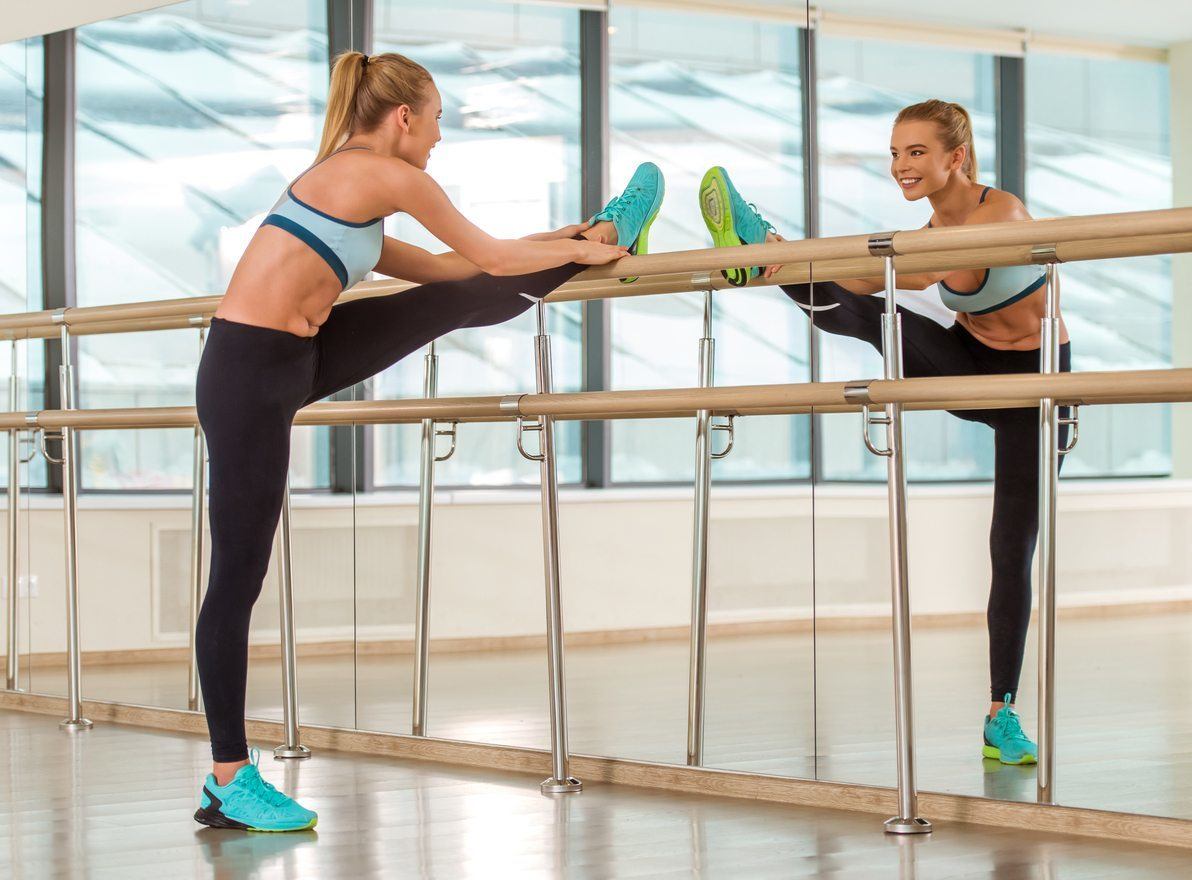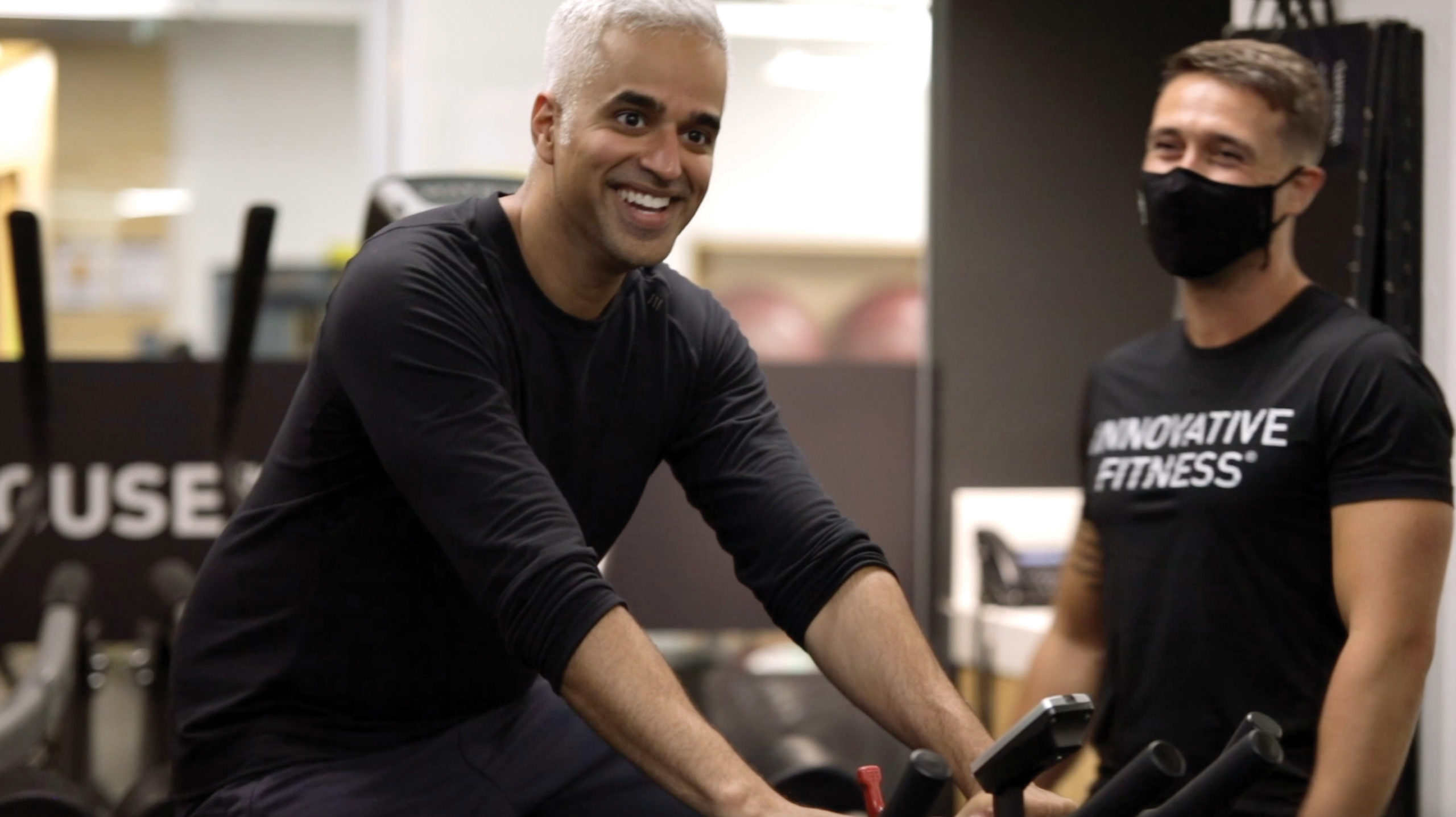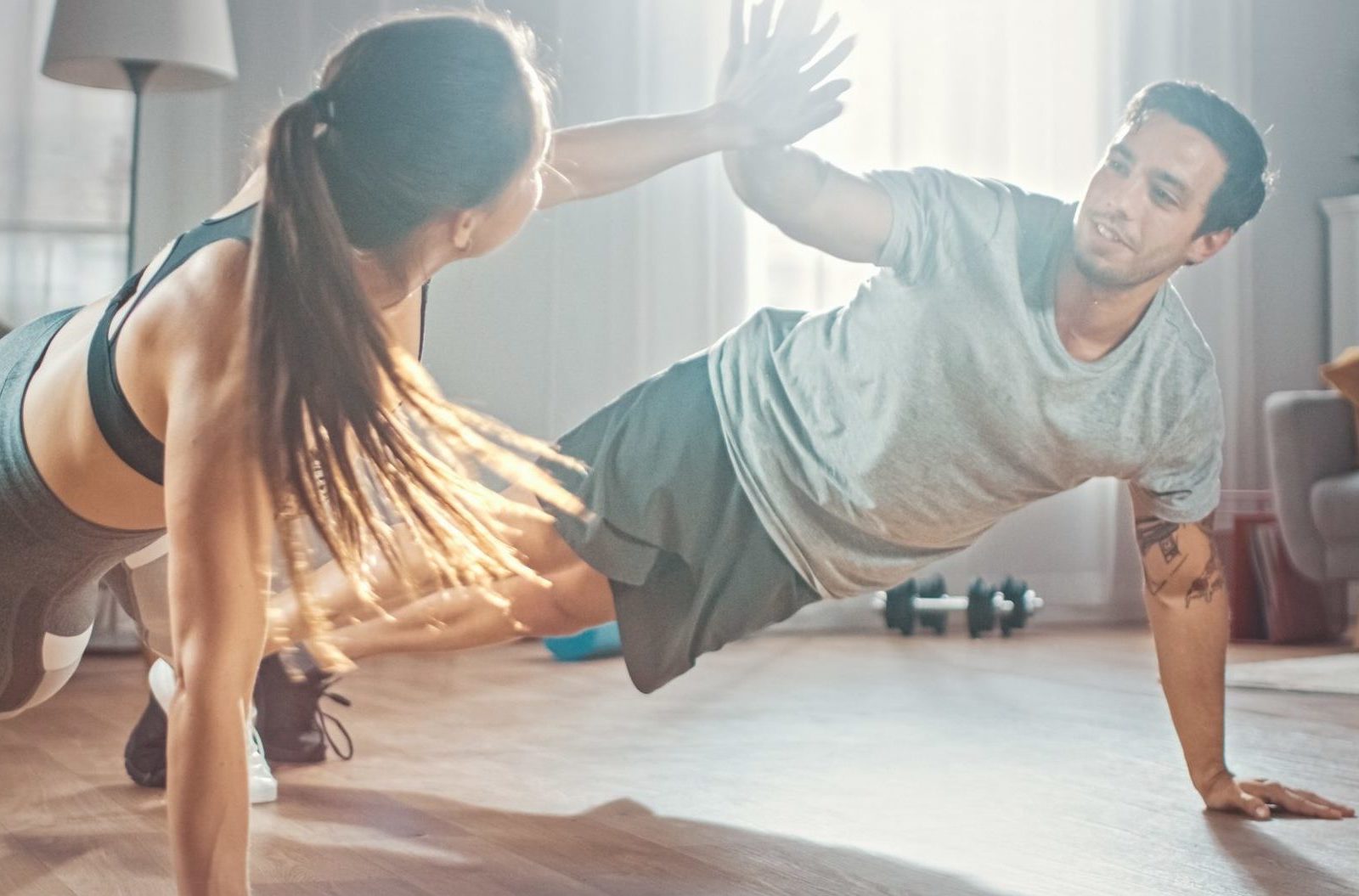Ballerinas make leaping through the air in fluid, intricate movements look completely effortless. But if you’ve ever tried the art of ballet, or even tried to jump gracefully, you’ll know it’s not easy!
To hone their core and leg strength, ballerinas use simple strengthening exercises that can be applied to a multitude of different areas of sport, and most of which can be done easily at home.
We’ve borrowed a few simple, yet effective exercises designed to help with alignment and strength. You can do these with a Thera-Band, or just with your own body weight.
1) Stabilizing the Trunk – Bicycle Curl Up
This exercise combines a traditional abdominal curl with awareness of the transversus abdominis (TA) – a key player in your pelvic floor strength. You use your TA to stabilize the pelvis as you lower the torso out of the crunch.
- Attach a Thera-Band (if you have one – you can perform this exercise without) to an object 10 inches off the ground. Lie supine with your torso facing away from the attachment, and loop the Thera-Band around each knee.
- Place your hands behind your head for support, and exhale as you lift your head towards your right leg in a traditional bicycle curl.
- Inhale as you lower your head and legs away from each other, while feeling your lower back press into the ground. Repeat the movement, bringing your left leg forward.
- The aim is to experience the Rectus Abdominis (RA, or 6 pack muscles) and the TA working as individual muscles throughout the movements. The RA will be concentrically shortening during the crunch phase, while you want to feel the TA concentrically shortening during the down phase without letting the RA try to take over. This is best accomplished by trying to ‘hollow out’ the front of your torso and thinking about bringing your belly button towards your spine.
• Repeat this exercise 12-15 times per side for 3 sets.
2) Increase Stability for Unilateral Movements – Hip Extensions
The muscles that extend your hips are the gluteus maximus and the hamstrings. The gluteus is a hip extensor, abductor and external rotator. Along with the semimembranosus and semitendinosus of the hamstrings, the gluteus helps dancers extend their hips in a turned out position, which is essential in the primary alignment in which dancers train.
- Place the end of a Thera-Band (or resistance cable band) under your knee, while the other end is attached to the opposite ankle.
- On all fours, lift your right leg to the back. Feel the tension of the band when your leg is stretched out horizontally to the back in an arabesque position.
- Move your leg up and down against the resistance band in a turned out position for 5 pulses. The turned out position may be hard due to lack of strength in the inner hamstrings.
- Slowly draw your knee back to the start position.
- Repeat on the same leg 10 times, then switch to the other. Repeat for 3 sets.
- Imagine energy flowing from your heart, down your arms to the floor, and maintain a sense of elasticity in the upper spine.
- When extending your leg backwards, imagine a string pulling the toes out and back, lengthening the spine instead of directly up to the ceiling. This will help prevent the abdominals from relaxing and causing the spine to collapse.
3) Realigning the Lobes of the Lungs
Many dancers are unaware of the tension they hold in their lungs; they simply think it is a muscular tension. But the lungs contain a lot of smooth musculature located around the alveoli and bronchi. If you release tension in the lungs, the upper chest will begin to feel open and light, and you will improve spinal and pelvic alignment. This exercise improves upper body alignment, lifts the chest without muscular strain, and creates more space for deeper breathing, which is essential in any form of exercise. It will also reduce pressure on the heart and diaphragm.
- Visualize the lobes of the lungs as stacked wedges that slide on top of each other.
- Move your chest up and down while keeping the shoulders back but relaxed, and visualize the upper lobes sliding on the lower ones.
- Once you have gained a sense of the mobility of the two lobes, imagine the lower lobes sliding down and forward. Opposite to that, imagine the upper lobes sliding back and up (figuratively creating a gap between the two lobes). It may help to inhale as you slide the upper lobe upwards. Imagine the lower lobe pressing against the diaphragm as you slide the upper lobe forward.
- Notice how easy it feels to maintain upper body alignment.
- Repeat 10 breaths for 3 sets
- Try some simple movements (walking lunges, squats, walkouts) with the feeling of the lungs supporting the spine.
Incorporating these exercises into your routine will be a great way to help gain strength and awareness of different muscle groups that are often overlooked, but provide benefits that translate into many exercises we do during personal training. So let your inner ballerina shine!
—
Lydia-Rose Kérouac-Dubé
Professional Training Coach
Events Manager
Innovative Fitness Kitsilano
p. 604 714 1661 / c. 604 866 4992






